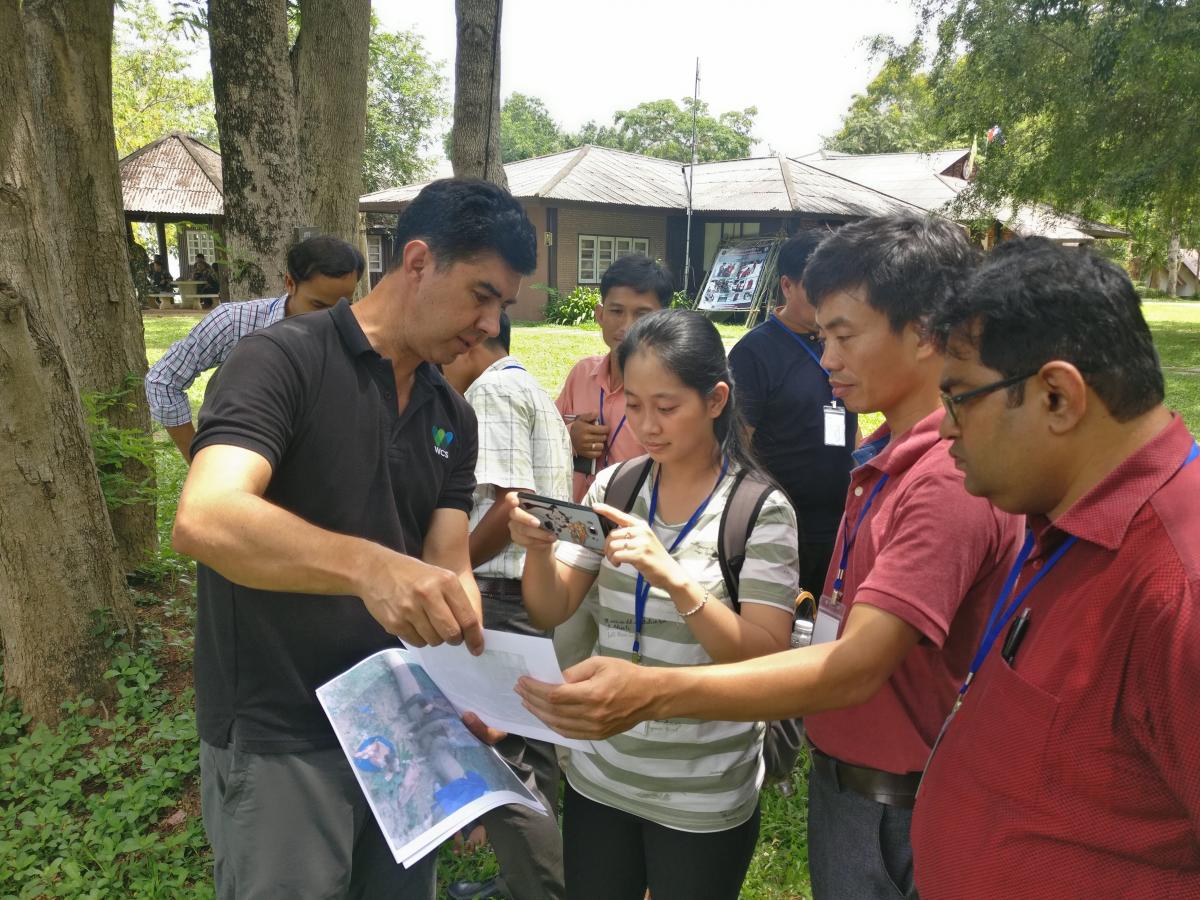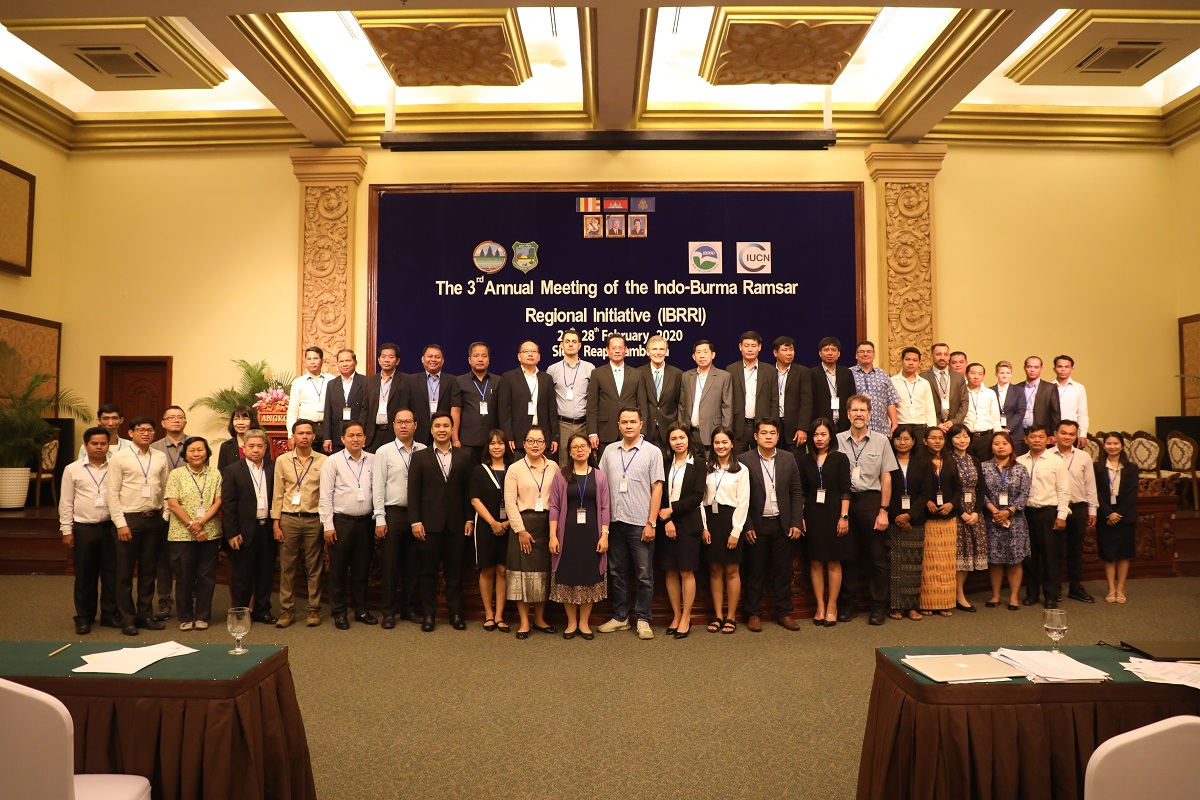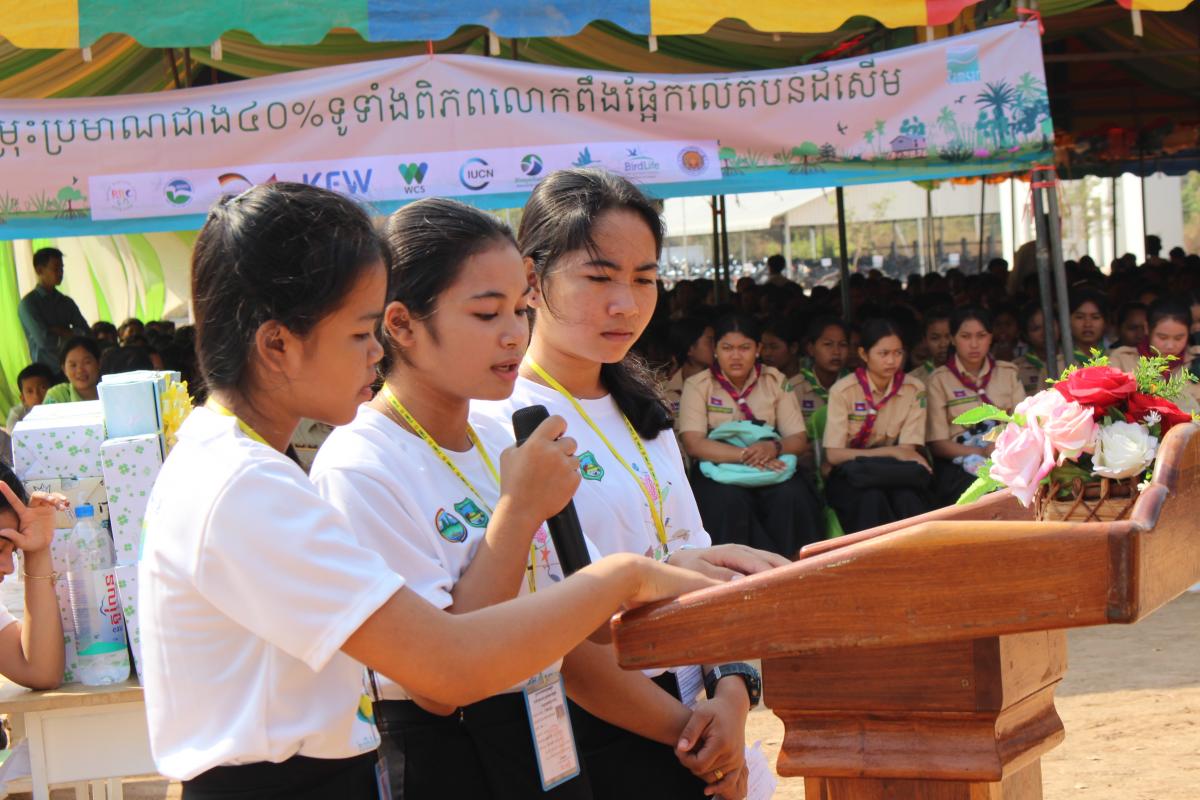Thailand introduces SMART tech to protect Asian elephants
In early May, the Monitoring the Illegal Killing of Elephants (MIKE) programme of the Convention on International Trade in Endangered Species of Wild Fauna and Flora (CITES), together with the Wildlife Conservation Society (WCS), organised a three-day workshop on the Spatial Monitoring and Reporting Tool (SMART).

Photo: ©IUCN
The workshop was hosted by Kaeng Krachan National Park and Thailand’s Department of National Parks, Wildlife and Plants Conservation and facilitated by representatives from the IUCN Asia Regional Office, which implements the MIKE Southeast Asia Support Unit. It covered the use of the SMART v6.2.3 programme and the Cybertracker app and was attended by 40 government and non-government representatives from MIKE sites in the Asian elephant range countries of Bangladesh, Bhutan, Cambodia, Indonesia, Lao PDR, Malaysia, Myanmar, Sri Lanka, Thailand and Viet Nam.
SMART is a computer programme that helps measure, evaluate and improve the effectiveness of wildlife law enforcement patrols and conservation activities at specific sites. It provides a suite of best practices and tools for efficiently collecting, analysing and reporting on anti-poaching efforts at these sites, which allows their managers to identify hotspots where attention is needed, empower staff to provide this attention, and give feedback to ranger teams. One of these tools is Cybertracker, an associated app that allows users in the field to immediately and thoroughly collect data, which can later be uploaded to SMART for analysis.
The workshop focused on the best techniques for introducing SMART into a conservation area, and the ways that SMART-based protection management differs from traditional protection management. When attempts to implement SMART fail to achieve significant, long-term improvement of protection quality, it is usually because enforcement staff are inadequately motivated or because SMART management staff are unable to make all the necessary changes to their management approach. The technical aspects of the SMART computer programme were briefly discussed, as technical issues can sometimes arise.
Over the three days, participants learned how to assess if a conservation site is suitable for the introduction of SMART, how to address weaknesses and improve suitability before introduction, and how to assess the level of threat and law enforcement capacity at a site. They also learned how to design procedures and collect data for the SMART software, how to use the tool and associated equipment, and how to effectively analyse patrol data. The workshop also contextualised the tool by presenting implementation case studies from across Asia and helping participants devise a strategy to expand SMART across national and regional networks.
The "SMART Approach" to wildlife protection uses collected data to improve patrol quality and can help measure trends in poaching pressures and other threats. If applied properly, and if protection capacity is sufficient, SMART can help control threats to wildlife and habitat and substantially improve protection of threatened species like Asian elephants. SMART is used in more than 600 conservation areas, including World Heritage Sites, across 50 countries and has become the global standard for protection monitoring and management.
____________________
About MIKE
The Monitoring the Illegal Killing of Elephants (MIKE) Programme was established in 1997 by the Parties to the Convention on International Trade in Endangered Species of Wild Fauna and Flora (CITES). The MIKE programme helps range States improve their ability to monitor elephant populations, detect changes in levels of illegal killing, and use this information to provide more effective law enforcement and strengthen any regulatory measures required to support such enforcement. MIKE is broadly implemented in Asia by the United Nations Office on Drugs and Crime, in Southeast Asia (Cambodia, China, Indonesia, Lao PDR, Malaysia, Myanmar, Thailand and Viet Nam) by the IUCN Asia Regional Office, and in South Asia (Bangladesh, Bhutan, India, Nepal and Sri Lanka) by the IUCN India Country Office, in partnership with the IUCN Asian Elephant Specialist Group. The European Union has funded implementation in Asia since 2017. Funding is also provided by the US Fish and Wildlife Service and the Governments of China, Japan and the United Kingdom.



